January 2020
On behalf of Ontario’s sixty-nine orchestras, the audiences they serve, the musicians they engage, and the enterprises they work with, Orchestras Canada is pleased to participate in the Standing Committee on Finance and Economic Affairs’ pre-budget consultations. We appreciate this opportunity and look forward to a continued and constructive dialogue with legislators in the coming months.
Orchestras are part of Ontario’s not for profit arts sector and a key element of the province’s creative economy. Ontario’s creative sector sustains over 286,000 jobs and contributes $25 billion to the province’s GDP. According to recent Statistics Canada data, the sector is over three times larger than either agriculture or mining (respectively contributing $7.4 and $6.9 billion to the province’s GDP).
Orchestras contribute to jobs and the economy in towns and cities across the province, a key priority for the Government of Ontario. It’s a good news story: every dollar invested by the Ontario Arts Council in operating grants to not-for-profit arts organizations (such as orchestras) is complemented by an average of $15.58 in private sector revenue (ticket sales, fees, donations, and sponsorship); furthermore, every dollar invested by the Ontario Arts Council in operating grants enables $21.60 in spending, including $12.26 on fees and salaries to Ontarians. The economic multiplier effect associated with the not-for-profit arts in Ontario has been conservatively estimated as 1:1.23.
Orchestras in Ontario
The Province of Ontario has had a long and mutually beneficial relationship with Ontario’s orchestras, demonstrated by thoughtful investment through the Ontario Arts Council (OAC). This investment (though proportionally small at 5.2% of Ontario orchestras’ overall revenues in 2018-19) plays an important role in the viability and success of our orchestras: the timing of grant announcements allows groups to plan responsibly, and the thoroughness of the grant review processes ensure that applicant organizations are addressing critical issues and are well-placed to succeed on-stage and in their communities, as well. Public support is seen as a vote of confidence in an organization, helping to leverage private sector investment.
From Thunder Bay to Owen Sound, from Windsor and Timmins to Ottawa, Toronto, and Kitchener- Waterloo, orchestras and the musicians they engage touch the lives of our citizens in meaningful ways that create impact: economically, socially and culturally.
- Orchestras support jobs in communities around the province, directly through fees paid to musicians and related personnel, and indirectly, in their relationships with concert venues, media, print media, IT professionals, marketing firms, hospitality, and tourism industries.
- The musicians that orchestras engage are the same people that perform in long-term care facilities, churches, and community centres. They offer music lessons, and support education programs in the schools and community. If there’s no orchestra, the musicians disperse, and these many contributions are lost.
- Through their public performances, education and community engagement programming, and extracurricular activities by their musicians, orchestras make cities and communities more active and attractive places, leading to happier, more engaged and more productive citizens. Tourism operators call orchestras “destination enhancers”. Additionally, orchestras have developed programs that specifically address important facets of our lives, like health and wellness, healthy aging, better learning outcomes, social integration, and newcomer welcomes.
- Orchestras are an acknowledged part of Ontario’s civic infrastructure. If a community is not large enough to support an orchestra, its residents still benefit from orchestras’ activities, through touring performances, teaching programs, or digital dissemination.
The diversity of Ontario’s orchestras (ranging from internationally-renowned ensembles that engage skilled professionals to perform at home in Ontario and on the world stage, volunteer-driven groups performing for neighbours and friends, our vibrant youth orchestras, seniors’ groups, big-city and small- town orchestras alike) is unique in Canada. Each one of these groups is a source of pride to its community.
The power of leveraging Ontario’s investment in orchestras
In 2018-19, grants to smaller-budget orchestras from the Ontario Arts Council ranged between $8000 and $17,000. These relatively modest investments might make the difference between an organization’s ability to mount a community engagement program, or not; might cover a part-time wage to an administrator to coordinate the orchestra’s activities, or not; might allow the orchestra to engage a skilled professional music director, or not. Relatively modest investments have major impact at the community level.
OAC investment in larger-budget orchestras in 2018-19, while greater in dollar amount, still represented on average well under 10% of the funded groups’ annual revenues. These larger orchestras create a significant number of jobs for professional musicians across the province, and reported attendance of over 820,000 people in 2018-19.
Looking forward
Orchestras, like any other business, thrive when they have access to stable, adequate resources to plan with confidence, develop long-term relationships, and make meaningful commitments to workers, whether artists, administrators, or production personnel. In turn, they contribute to communities, our education system and economy.
In 2018-19, the Ontario government reduced the OAC’s funding in-year by $5 million, as part of an overall reduction to government spending. Reduced funding to the OAC means that orchestras – along with the rest of the arts community – are re-shaping their activities to match the resources available, resulting in less arts activity, less ability to invest in long term developmental initiatives, reduced capacity for strategic risk-taking, and less economic spin-off. This affects their contribution–economically, socially and culturally–to the fabric of Ontario.
Building alternative models
Between 1998 and 2008, the Ontario Arts Endowment Fund (launched by a prior Progressive Conservative government and administered by the Ontario Arts Foundation) matched a remarkable $60 million in private sector contributions to arts organizations of all sizes in communities across the province. The combined funds have been invested in perpetuity, and income from these investments provides unrestricted revenue that arts organizations (including orchestras) are using to sustain and develop important programs, including arts education, community engagement, and accessibility-focused programs. While the Ontario program ended in 2008, donors’ enthusiasm for this kind of matching funds program remains high: an equivalent federal program, in place since 2001, has been consistently over-subscribed.
Alternative approaches to financing such as the Ontario Arts Endowment Fund can strengthen the long- term sustainability of arts organizations, including orchestras, in times of fiscal restraint. We would welcome the opportunity to explore this and other approaches to resourcing the arts.
Our recommendations
Earlier this month, OC consulted our Ontario member orchestras on key messages and issues. Here’s what we heard, and here’s what we recommend:
- Stable, adequate investment from a trusted arms-length agency like the Ontario Arts Council is vital for orchestras. Without it, their capacity to serve their communities effectively is diminished, as is their ability to leverage funding at the federal level and from the private sector.
Recommendation: We ask the Government of Ontario to increase its investment in the arts through the Ontario Arts Council by $5 million in fiscal 2020-21, to work with the OAC to measure the impact of this investment, and to sustain and increase the investment over time.
- There is an integral connection between the quality of arts education (including music) in the province’s publicly-funded schools and the vitality of local musical culture. Orchestra leaders acknowledge that strong school music programs (with relevant and visionary curricula, qualified teachers, and collaboration between local arts organizations and school arts programs) are necessary for strong community-based music organizations, today and in the future. Orchestras are eager to play their part in introducing students to the power of live performance, thereby strengthening school programs, reducing barriers to arts access and participation, and expanding the work that they are already doing in their communities.
Recommendation: We ask the Government of Ontario, through the Ministries of Heritage, Sport, Tourism, and Culture Industries and Education in collaboration with the Ontario Arts Council to pilot and evaluate a program (over a three-year period, in different jurisdictions across the province) to fully subsidize student attendance at live performances by Ontario professional arts groups. Modeled on a highly successful program in the province of Quebec, a relatively modest investment – to be determined between Ministries – could yield significant results.
- Orchestras would welcome measures to leverage existing private sector investment and help diversify revenues. One such model was successfully introduced in Ontario in the late 1990s as the Ontario Arts Endowment Program, matching private sector contributions to arts organizations’ endowment funds dollar for dollar up to a capped amount. According to the Ontario Arts Foundation (administrator of the program), during the program’s existence, arts organizations across Ontario attracted $60 million in matching funds. And over the last 20 years, the investment has yielded more than $87 million in income to participating Ontario arts organizations.
Recommendation: We ask the Government of Ontario to explore with the Ontario Arts Foundation the feasibility of revising, re-investing in, and re-launching the Ontario Arts Endowment Program.
- Orchestras are keen to expand their use of digital tools to expand their reach and serve their communities more effectively. Yet, lacking capacity for the required investments in new technology and expertise, they often lag behind. Relatively small investments in digital transformation (modeled on the Digital Main Street partnership between the Ontario government and the Ontario BIA Association) will make a significant difference in the not-for-profit arts sector, and complement the targeted investment the province has already made in revitalizing the digital footprint of small businesses.
Recommendation: We ask the Government of Ontario to explore the feasibility of piloting a Digital Main Street-style program for not-for-profit arts and culture organizations.
Investment in orchestras and the arts is an investment in the people of Ontario that will drive economic growth and cultural development. Arts investment provides a return in investment that can be measured by economic growth, social cohesion and well-being, and cultural engagement – all elements important to making Ontario a fair and welcoming province.
Thank you for considering Orchestras Canada’s recommendations for Budget 2020. We sincerely appreciate the opportunity to participate in this process.
Katherine Carleton, C.M.
Executive Director
Orchestras Canada/Orchestres Canada
Orchestras Canada – Ontario Member Orchestras 2019-20
Ardeleana Chamber Music Society/Whispering River Orchestra (Parry Sound, ON), Brantford Symphony Orchestra, Burlington Symphony Orchestra, Cambridge Symphony Orchestra, Cathedral Bluffs Symphony Orchestra (Scarborough), Counterpoint Community Orchestra (Toronto), Deep River Symphony Orchestra, Dundas Valley Orchestra (Dundas), Durham Chamber Orchestra (Port Perry), Durham Youth Orchestra (Oshawa), Esprit Orchestra (Toronto), Etobicoke Philharmonic Orchestra, Georgian Bay Symphony (Owen Sound), Guelph Symphony Orchestra, Hamilton Philharmonic Orchestra, Huronia Symphony Orchestra (Barrie), International Symphony Orchestra (Sarnia), Italian Canadian Symphony Orchestra (Toronto), Kanata Symphony Orchestra, Kawartha Youth Orchestra (Peterborough), Kindred Spirits Orchestra (Markham), Kingston Symphony, Kitchener-Waterloo Chamber Orchestra, Kitchener-Waterloo Community Orchestra, Kitchener-Waterloo Symphony, Kitchener-Waterloo Symphony Youth Orchestra, London Community Orchestra, London Symphonia, Milton Philharmonic Orchestra, Mississauga Symphony Orchestra, Music4Life Ensemble (Ajax), National Arts Centre Orchestra / Orchestre du Centre national des Arts (Ottawa), National Youth Orchestra of Canada (Toronto), Niagara Symphony Orchestra (St. Catharines), North Bay Symphony Orchestra, Northumberland Orchestra & Choir (Cobourg), North York Concert Orchestra, Oakville Chamber Orchestra, Oakville Symphony, Oakville Symphony Youth Orchestra, Ontario Philharmonic (Oshawa), Orchestra Breva (Harrow), Orchestra Kingston, Orchestra Toronto, Ottawa Pops Orchestra, Ottawa Symphony Orchestra, Ottawa Youth Orchestra Academy, Parkdale United Church Orchestra (Ottawa), Pembroke Symphony Orchestra, Peterborough Symphony Orchestra, Quinte Symphony (Belleville), Richmond Hill Philharmonic Orchestra, Rose Orchestra (Brampton), Sault Symphony Orchestra, Scarborough Philharmonic Orchestra, Sinfonia Toronto, Stratford Symphony Orchestra, Strings Attached Orchestra (Toronto), Sudbury Symphony Orchestra, Tafelmusik Baroque Orchestra (Toronto), Thirteen Strings Chamber Orchestra (Ottawa), Thunder Bay Symphony Orchestra, Thunder Bay Symphony Youth Orchestra, Timmins Symphony Orchestra, Timmins Youth Orchestra, Toronto Symphony Orchestra, Toronto Symphony Youth Orchestra, Windsor Symphony Orchestra, York Chamber Ensemble.
Ontario Associate Organizations, 2019-20:
Ars Musica (Toronto), Brott Music Festival/National Academy Orchestra (Hamilton), Canadian Federation of Musicians (Toronto), Dean Artists Management (Toronto), Domoney Artists Management (Toronto), Music Toronto, National Ballet Orchestra (Toronto), Sultans of String (Burlington), University of Toronto Faculty of Music

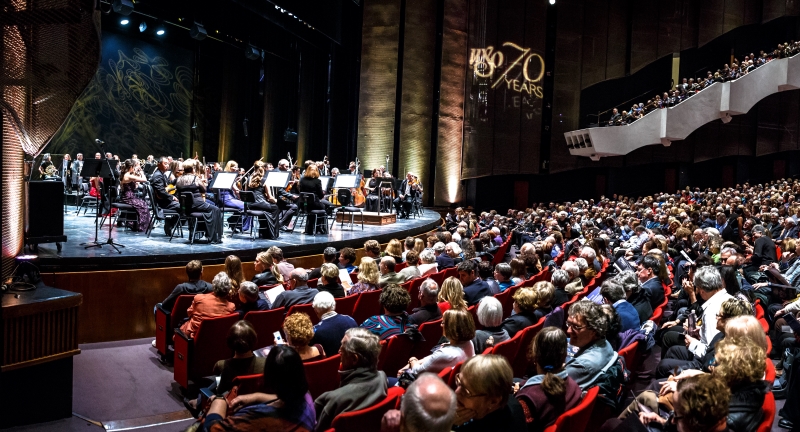
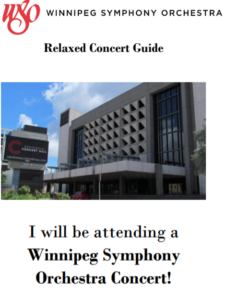 Preparing for this concert was more complex than usual. The team at the WSO created two new documents to help prepare people attending: a pre-visit guide, and a concert experience guide. These documents were created by and in consultation with individuals who were close to the WSO, and have worked with or been a caregiver for someone on the spectrum. Through the pre-visit guide, potential audience members are walked through what to expect from transportation to the venue until arrival at one’s seat. The concert experience guide prepares people for what to expect during the concert itself, and lists some of the amenities available to them, including fidget objects, colouring activities and reserved spaces for a more or less intense experience (at the very front or back of the hall).
Preparing for this concert was more complex than usual. The team at the WSO created two new documents to help prepare people attending: a pre-visit guide, and a concert experience guide. These documents were created by and in consultation with individuals who were close to the WSO, and have worked with or been a caregiver for someone on the spectrum. Through the pre-visit guide, potential audience members are walked through what to expect from transportation to the venue until arrival at one’s seat. The concert experience guide prepares people for what to expect during the concert itself, and lists some of the amenities available to them, including fidget objects, colouring activities and reserved spaces for a more or less intense experience (at the very front or back of the hall).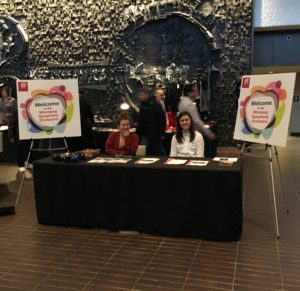 “As soon as the doors opened, there was a different feeling in the air,” Johnson said. For the approximately 600 audience members, there was a real excitement that this concert was bringing new people to the symphony who may have experienced barriers in accessing this music before.
“As soon as the doors opened, there was a different feeling in the air,” Johnson said. For the approximately 600 audience members, there was a real excitement that this concert was bringing new people to the symphony who may have experienced barriers in accessing this music before.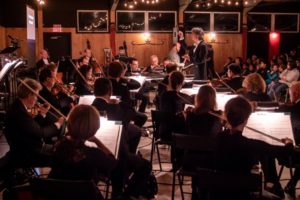


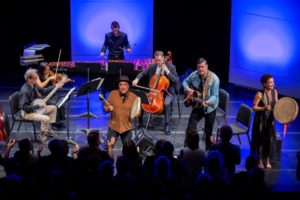
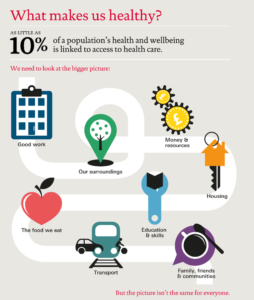
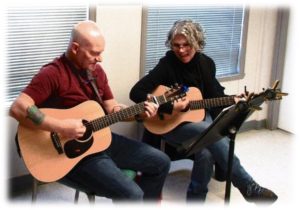 During the particular session at the Orchestras Canada conference on “Social Prescribing and Orchestras”, Sonia Hsiung, who is leading the Ontario initiative at the Alliance for Healthier Communities, posed the following question: “Where do you see the role of orchestras in enhancing wellbeing and creating community belonging?” Some examples of successful partnerships between the Arts community and CHCs were presented at the two June conferences. South Riverdale CHC’s chronic pain management program, in partnership with the Art Gallery of Ontario, provides training for Peer Ambassadors to lead gallery visits and art-making workshops “with the lens of health and well-being to support self-management and healthy living” for people who have similar lived experience. What if orchestras across Canada are able to co-design similar community-specific arrangements with local healthcare providers that create facilitated access for those with health and social barriers and unable to attend otherwise? Or if docent programs run by the orchestra’s volunteer committee could include CHC clients identified for their love of children to help out with pre-concert activities at family concerts? With sufficient desire and adequate support, many more innovative partnerships like this one in Toronto could be piloted.
During the particular session at the Orchestras Canada conference on “Social Prescribing and Orchestras”, Sonia Hsiung, who is leading the Ontario initiative at the Alliance for Healthier Communities, posed the following question: “Where do you see the role of orchestras in enhancing wellbeing and creating community belonging?” Some examples of successful partnerships between the Arts community and CHCs were presented at the two June conferences. South Riverdale CHC’s chronic pain management program, in partnership with the Art Gallery of Ontario, provides training for Peer Ambassadors to lead gallery visits and art-making workshops “with the lens of health and well-being to support self-management and healthy living” for people who have similar lived experience. What if orchestras across Canada are able to co-design similar community-specific arrangements with local healthcare providers that create facilitated access for those with health and social barriers and unable to attend otherwise? Or if docent programs run by the orchestra’s volunteer committee could include CHC clients identified for their love of children to help out with pre-concert activities at family concerts? With sufficient desire and adequate support, many more innovative partnerships like this one in Toronto could be piloted. Orchestras Canada’s member orchestras range in size from fully professional ensembles, to smaller regional orchestras, to community groups working with enthusiastic amateur musicians. The Music4Life String Orchestra is one such community group. Based in Ajax, Ontario. Music4Life’s orchestra currently has over 30 string musicians, including four professional section leads who act as mentors and teachers to the rest of the ensemble. The orchestra members range in age from 8 to 78 years old, making for an unusual but beneficial social and musical experience for all involved.
Orchestras Canada’s member orchestras range in size from fully professional ensembles, to smaller regional orchestras, to community groups working with enthusiastic amateur musicians. The Music4Life String Orchestra is one such community group. Based in Ajax, Ontario. Music4Life’s orchestra currently has over 30 string musicians, including four professional section leads who act as mentors and teachers to the rest of the ensemble. The orchestra members range in age from 8 to 78 years old, making for an unusual but beneficial social and musical experience for all involved.
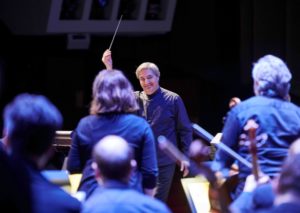
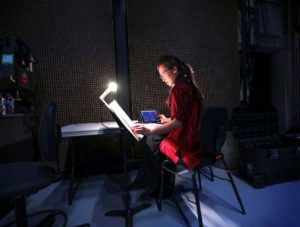
 Musicians from the Windsor Symphony Orchestra visited community and health venues between October 1st and 10th as part of their Music for Health outreach program. Last year this program included 21 performances to more than 1200 seniors in and around Windsor.
Musicians from the Windsor Symphony Orchestra visited community and health venues between October 1st and 10th as part of their Music for Health outreach program. Last year this program included 21 performances to more than 1200 seniors in and around Windsor.
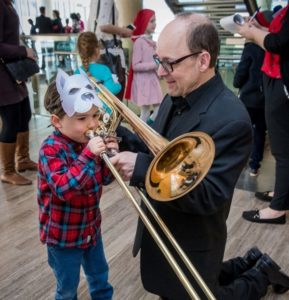 Since its beginnings, the Orchestre symphonique de Montréal has kept education at the centre of its mission, and has continued to develop new initiatives for engaging young people in classical music. One can think back to the Youth Concerts that were started in 1935 by Wilfrid Pelletier, or to more recent examples such as
Since its beginnings, the Orchestre symphonique de Montréal has kept education at the centre of its mission, and has continued to develop new initiatives for engaging young people in classical music. One can think back to the Youth Concerts that were started in 1935 by Wilfrid Pelletier, or to more recent examples such as 
 Since 1940 the OSM has presented the OSM Competition, Canada’s most prestigious performance competition for young musicians, offering prizes worth more than $100,000 in value to its winners, as well as significant visibility on the international stage. The OSM invites the public to discover 17 violinists and cellists aged between 15 and 25 during the semi-finals and final rounds, which will take place from November 27th to 30th in Montreal. All competition events are
Since 1940 the OSM has presented the OSM Competition, Canada’s most prestigious performance competition for young musicians, offering prizes worth more than $100,000 in value to its winners, as well as significant visibility on the international stage. The OSM invites the public to discover 17 violinists and cellists aged between 15 and 25 during the semi-finals and final rounds, which will take place from November 27th to 30th in Montreal. All competition events are  Competition winners receive enormous support from the OSM. In addition to cash prizes and scholarships, many have developed a special relationship with the orchestra; the OSM has offered many competition winners the opportunity to perform as soloists, recitalists or chamber musicians with OSM musicians. Kent Nagano also conducts an orchestra of past competition winners during the summer Classical Spree festival. In addition, the OSM fosters partnerships between competition winners and its own artistic partners and international guest artists: an important step for early-career artists.
Competition winners receive enormous support from the OSM. In addition to cash prizes and scholarships, many have developed a special relationship with the orchestra; the OSM has offered many competition winners the opportunity to perform as soloists, recitalists or chamber musicians with OSM musicians. Kent Nagano also conducts an orchestra of past competition winners during the summer Classical Spree festival. In addition, the OSM fosters partnerships between competition winners and its own artistic partners and international guest artists: an important step for early-career artists. Both the Conservatives and the Liberals could either lose or gain significant ground in Ontario. So many races are too close to call that the outcome in Ontario could help either party to form the next government. The Liberals held 76 seats in Ontario when the writ was dropped and are projected to win between 32 and 92 seats. The Conservatives held 33 seats in Ontario and are projected to win between 20 and 73 seats. Conservatives have been trending up in Ontario over the past week.
Both the Conservatives and the Liberals could either lose or gain significant ground in Ontario. So many races are too close to call that the outcome in Ontario could help either party to form the next government. The Liberals held 76 seats in Ontario when the writ was dropped and are projected to win between 32 and 92 seats. The Conservatives held 33 seats in Ontario and are projected to win between 20 and 73 seats. Conservatives have been trending up in Ontario over the past week. The NDP’s fortunes have improved somewhat since the televised debates, but the party still stands to lose significant ground in Québec. At the time the writ dropped, the NDP held 14 seats in Québec. As of now, they project to win 2 to 5 seats.
The NDP’s fortunes have improved somewhat since the televised debates, but the party still stands to lose significant ground in Québec. At the time the writ dropped, the NDP held 14 seats in Québec. As of now, they project to win 2 to 5 seats. Claire Guimond is the winner of the Orchestras Canada Betty Webster Award for 2019. Mme Guimond will receive the award on Friday, October 18th, at the opening concert of Arion Baroque Orchestra’s 2019-20 concert season. 2019-20 marks Mme Guimond’s final season as Artistic Director of the Montreal-based ensemble.
Claire Guimond is the winner of the Orchestras Canada Betty Webster Award for 2019. Mme Guimond will receive the award on Friday, October 18th, at the opening concert of Arion Baroque Orchestra’s 2019-20 concert season. 2019-20 marks Mme Guimond’s final season as Artistic Director of the Montreal-based ensemble.